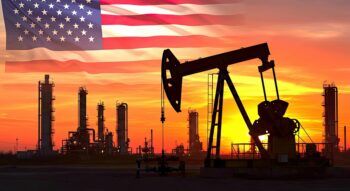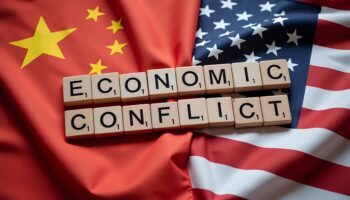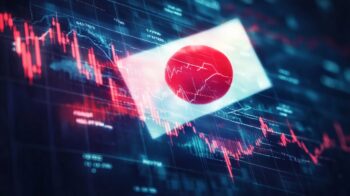Headlines
- 1 Will High Tariffs Revive U.S. Manufacturing? The Harsh Reality Facing the Steel and Shipbuilding Industries
- 2 Chinese Goods Still in Demand Despite Tariffs, The Uncertain Future of Trump’s Tariff
- 3 Severe Warning Signs in China’s Economy, Economic Growth Rate Slowing Down
- 4 MSC Pulls Ahead, CMA Invests in the U.S., While ONE Fluctuates Under Tariff Pressure
- 5 March 2025 Newly Built Containers Information: Slowing Shipments Push Factory Inventories Higher
- 6 Japan Surpassed by California, The Hard Truth Behind the ‘Lost 30 Years’
Will High Tariffs Revive U.S. Manufacturing? The Harsh Reality Facing the Steel and Shipbuilding Industries
 President Trump’s first 100 days in office—often referred to as the “honeymoon period”—came to an end on April 29. As this is his second term, and having had four years during President Biden’s administration to prepare thoroughly, Trump issued approximately 130 executive orders in rapid succession to fulfill his campaign promises. This number is more than three times that of former President Biden, who held the previous postwar record.
President Trump’s first 100 days in office—often referred to as the “honeymoon period”—came to an end on April 29. As this is his second term, and having had four years during President Biden’s administration to prepare thoroughly, Trump issued approximately 130 executive orders in rapid succession to fulfill his campaign promises. This number is more than three times that of former President Biden, who held the previous postwar record.
At the core of his pledges lies “MAGA”—Make America Great Again—through which he aims to eliminate illegal immigrants who take American jobs and contribute to crime and drug problems, thereby harming public safety. He also seeks to impose high tariffs in order to reduce the trade deficit and bring manufacturing back to the U.S., thus securing domestic employment.
But can high tariffs really bring back U.S. manufacturing, as President Trump claims? According to the National Association of Manufacturers (NAM), approximately 60% of all imports into the United States consist of parts and raw materials used in manufacturing. NAM is urging the administration to exempt such goods from tariffs. To revitalize the manufacturing sector, it is essential to have networks of primary workers who produce components and materials and secondary workers who assemble parts and components under subcontract. Without these foundational layers, it is extremely difficult to build a competitive manufacturing industry. The automobile industry may still have a chance—but how does he plan to reestablish shipbuilding in the United States? China currently holds a 30% share of the global shipbuilding market. Creating a steel or shipbuilding industry that can rival China’s is not something that can be achieved overnight. Even if such industries are built and temporarily protected by high tariffs, they are almost certain to become nothing more than fleeting blooms.
China produces one billion tons of steel annually. How can the U.S. possibly compete with a country that manufactures more than half of the world’s steel? And how can it stand up to a nation that exports its domestic surplus at low prices to foreign markets?
On May 1, U.S. Steel announced its financial results for the first quarter of 2025 (January–March), reporting revenue of $3.727 billion, a 10% decrease from the same period last year, and a net loss of $116 million (compared to a $171 million profit a year earlier). This marks the 11th consecutive quarter of declining revenue and the second straight quarter of net losses. U.S. Steel, once symbolic of the American steel industry, is now facing this harsh reality.
In December 2024, Nippon Steel agreed to acquire U.S. Steel for $14.1 billion (approximately ¥2 trillion). If this deal goes through, combining Nippon Steel—the world’s fourth-largest crude steel producer—with U.S. Steel—the 24th largest—would create the world’s third-largest steel manufacturer. This, indeed, could lead to what President Trump envisions, i.e., preserving jobs in America and firmly establishing a genuinely competitive manufacturing base within the country. Wouldn’t such a strengthened U.S. steelmaker be better positioned to compete against China? This is what we would like to say to President Trump! Revitalizing American industry should begin by reinforcing the companies that already exist in the United States.
Chinese Goods Still in Demand Despite Tariffs, The Uncertain Future of Trump’s Tariff
 On March 26, President Trump announced a 25% tariff on all imported vehicles, including Japanese cars, with implementation starting on April 3. Tariffs on auto parts followed, going into effect on May 3. However, when President Trump revealed further details about the reciprocal tariffs on April 2, fears over higher-than-expected tariffs triggered a sharp market sell-off. The Dow Jones Industrial Average plummeted by US$2,231 compared to the previous day—marking the third-largest one-day drop in history. Alarmed by the financial turmoil, President Trump moved to calm the markets. On April 9, he declared a 90-day suspension of the newly implemented reciprocal tariffs, excluding China. This announcement led to a historic surge in stock prices, with the Dow surging by US$2,962—the largest single-day gain ever recorded. On April 11, it was further announced that smartphones and electronic-related products would be excluded from the tariffs. Over half of all smartphones sold in the U.S. are Apple iPhones, and 80% of these are manufactured in China. Consequently, Chinese-made smartphones, computers, and their electronic parts were excluded from the tariff measures.
On March 26, President Trump announced a 25% tariff on all imported vehicles, including Japanese cars, with implementation starting on April 3. Tariffs on auto parts followed, going into effect on May 3. However, when President Trump revealed further details about the reciprocal tariffs on April 2, fears over higher-than-expected tariffs triggered a sharp market sell-off. The Dow Jones Industrial Average plummeted by US$2,231 compared to the previous day—marking the third-largest one-day drop in history. Alarmed by the financial turmoil, President Trump moved to calm the markets. On April 9, he declared a 90-day suspension of the newly implemented reciprocal tariffs, excluding China. This announcement led to a historic surge in stock prices, with the Dow surging by US$2,962—the largest single-day gain ever recorded. On April 11, it was further announced that smartphones and electronic-related products would be excluded from the tariffs. Over half of all smartphones sold in the U.S. are Apple iPhones, and 80% of these are manufactured in China. Consequently, Chinese-made smartphones, computers, and their electronic parts were excluded from the tariff measures.
Due to growing distrust in President Trump’s erratic trade policy, foreign investors have been reducing their holdings of U.S. equities. According to private sector estimates, the total amount of net selling since March has reached $63 billion (approximately ¥9 trillion). Capital outflows from U.S. Treasury funds have also continued. In addition to the direct blow high tariffs deal to the U.S. economy and corporate earnings, it appears that the uncertainty surrounding these tariff policies is driving capital away from the U.S.
Meanwhile, the United States is currently imposing a total tariff rate of 145% on goods imported from China. However, among the total value of Chinese products imported into the U.S. in 2024, 36%—equivalent to approximately $158 billion—consists of items for which Chinese products hold more than a 70% share of the U.S. import market. These are mainly consumer goods such as smartphones, toys, storage batteries, video game consoles, plastic products, electric heaters, and recreational items. There are also reports indicating that for 24.1% of the total import value from China, Chinese products hold a dominant market share of 81–100% in their respective categories.
Furthermore, Chinese products are noted for their strong price competitiveness. For 52% of the goods that the U.S. imports from China, the sales price in the U.S. market is up to 50% lower than that of competing products imported from other countries. Additionally, 21% of the Chinese import value comprises products that are sold in the U.S. at around half the price of competing items. These findings suggest that even with high tariffs, American consumers may continue purchasing Chinese products due to their affordability.
In the broader context of China’s export destinations, the U.S. only accounts for a 14% share. Considering China’s overall economic scale of $14 trillion (about ¥2,100 trillion), the exports to the U.S., which amount to roughly $550 billion (about ¥85 trillion), represent only a small portion. The situation is taking an appearance of a contest of endurance between President Trump and China. Yet, one can almost envision a moment when President Trump will abandon the high-tariff policy altogether eventually saying, “I’m done with this!”
Severe Warning Signs in China’s Economy, Economic Growth Rate Slowing Down
However, China’s economy is not entirely secure either—particularly when it comes to employment measures. This year, the number of university graduates is expected to exceed 12.2 million, the highest in history. Between 2020 and 2024, the number of unemployed university graduates is estimated to have reached 30 million. On March 9, China’s National Bureau of Statistics released the Producer Price Index (PPI) for February, which showed a 2.2% decline year-on-year. This marks the 29th consecutive month of decline since October 2022. Behind these figures lies the harsh reality of worsening corporate performance, bankruptcies, and mass unemployment, meaning there is little time to spare.
In February of this year, the Office of the United States Trade Representative (USTR) declared that China’s dominant position in the maritime, logistics, and shipbuilding sectors constitutes unfair trade practices. The U.S. announced retaliatory measures under Section 301 of the Trade Act. On April 17, the U.S. disclosed detailed port fees targeting vessels operated or owned by Chinese shipping companies that call at U.S. ports, as well as Chinese-built ships. The measures will be implemented in two phases. In the first phase, following a 180-day grace period, ships operated by Chinese carriers will be subject to a port fee of $50 per ton, with plans to increase this fee incrementally over the next three years. As for Chinese-built ships, port charges will be calculated based on either the ship’s net tonnage or the number of containers onboard, whichever yields a higher fee. The rates announced include $18 per ton or $120 per container for arriving vessels. However, Chinese-built vessels under 4,000 TEU will be exempted. Still, considering that Chinese-built ships are widely used not only by Chinese shipping companies but also by carriers from other countries, the resulting rise in ocean freight costs will be significant. There is no doubt that President Trump’s overly emotional and erratic trade policy—akin to the Japanese saying, “if you hate the monk, you hate even his robe”—is a major factor contributing to high inflation in the United States.”
China’s real GDP for the January–March quarter increased by 5.4% year-on-year. However, sluggish domestic demand continues due to the ongoing real estate recession. The Trump administration’s additional tariffs on China have reached 125%, bringing the cumulative total to 145%. As a result, production for U.S.-bound goods has been halted and contracts canceled, causing a sharp drop in transportation demand. In the one-month period leading up to May 11, 26 container ship sailings bound for the United States were canceled. Compared to the week ending April 13, this represents an expected decline of nearly 40%.
Goldman Sachs has revised its forecast for China’s 2025 growth rate downward from 4.5% to 4.0%, citing reasons such as the escalation of U.S. reciprocal tariffs.
MSC Pulls Ahead, CMA Invests in the U.S., While ONE Fluctuates Under Tariff Pressure
According to European maritime research firm Alphaliner, the Swiss shipping company MSC reached a historic milestone in early April this year, becoming the first in the world to operate 900 vessels. This fleet consists of 609 owned ships and 291 chartered vessels. Since the COVID-19 pandemic, MSC has acquired more than 400 secondhand vessels. As a result, the MSC Group’s current total operating capacity has reached approximately 6.47 million TEUs—about 1 million TEUs more than second-ranked Maersk. MSC now accounts for 20.3% of global container vessel capacity. Moreover, MSC has firm orders for 132 newbuild vessels, and its fleet is expected to surpass 1,000 ships within a few years.
Meanwhile, French container shipping group CMA CGM has announced plans to invest $20 billion in the U.S. over the next four years. It also plans to expand the number of U.S.-flagged vessels operated by its American subsidiary APL from 10 to 30. However, French President Emmanuel Macron has urged French companies to temporarily halt investments in the United States in response to President Trump’s April 2 announcement of a 10% import tariff under the reciprocal tariff scheme. As a result, CMA CGM’s U.S. investment plans may be affected.
Ocean Network Express (ONE) recorded a substantial increase in net profit for the full fiscal year 2024, posting $4.244 billion (approximately ¥605.3 billion), a 4.4-fold increase compared to the previous fiscal year. While the company projects a significant decline in profit for fiscal year 2025 due to uncertainty surrounding U.S. tariff policies, it expects net profit of $1.1 billion if conditions remain relatively stable. However, if the impact of the reciprocal tariffs materializes fully in earnings, net profit could fall to as low as $250 million.
Meanwhile, ONE announced that on June 16 it will pay dividends of approximately $760 million (about ¥113.6 billion) to its parent company Nippon Yusen Kaisha (NYK), $620 million (about ¥92.6 billion) to Mitsui O.S.K. Lines (MOL), and $619 million (about ¥92.6 billion) to Kawasaki Kisen Kaisha (K-Line). These three parent companies plan to record the amounts as non-operating income in their consolidated financial results for the fiscal year ending March 2026.
March 2025 Newly Built Containers Information: Slowing Shipments Push Factory Inventories Higher
In April, the price of newly built containers was $1,650 per 20ft unit, down by $100 or 5.7% from the previous month. This drop is mainly attributed to declining prices of steel and flooring materials. Compared to January’s $1,900 per 20ft, this represents a 13.2% or $250 decrease. Given forecasts that logistics volume from China to the U.S. may fall by as much as 60% starting in May, demand for new containers is unlikely to recover unless the tariff dispute with the U.S. is resolved.
April’s total production volume of new containers was 470,255 TEU (Dry: 426,258 TEU; Reefer: 44,997 TEU). Factory inventory at the end of the month stood at 1,574,749 TEU (Dry: 1,514,674 TEU; Reefer: 60,075 TEU). Compared to the previous month, total inventory increased by 43,282 TEU (Dry: +47,042; Reefer: –3,760 TEU). While dry container inventory rose, reefer container inventory declined. On a percentage basis, total inventory increased by 2.8% (Dry: +3.2%; Reefer: –5.9%).
Factory shipments totaled 426,973 TEU (Dry: 379,266 TEU; Reefer: 47,757 TEU), indicating that a large number of containers were dispatched—likely due to a rush in exports to the U.S. Nevertheless, total factory inventory rose by 43,282 TEU, or 2.8%, from the previous month.
Japan Surpassed by California, The Hard Truth Behind the ‘Lost 30 Years’
 On April 24, news broke that the economy of the U.S. state of California had overtaken Japan’s to become the fourth largest in the world. In 2024, California’s nominal GDP—its state-level economic output—reached $4.1 trillion (approximately ¥586 trillion), surpassing Japan’s nominal GDP of ¥609 trillion ($4.02 trillion) for the same year. This shift reflects the impact of the weak yen and strong dollar.
On April 24, news broke that the economy of the U.S. state of California had overtaken Japan’s to become the fourth largest in the world. In 2024, California’s nominal GDP—its state-level economic output—reached $4.1 trillion (approximately ¥586 trillion), surpassing Japan’s nominal GDP of ¥609 trillion ($4.02 trillion) for the same year. This shift reflects the impact of the weak yen and strong dollar.
Japan’s asset bubble period lasted 52 months, from December 1986 to February 1992. At that time, land near the Imperial Palace in Tokyo was traded at higher prices than all the land in California. It was said that the land within Tokyo’s Yamanote Line could have bought all the land in the United States. Rolls-Royces were selling in exceptionally high volumes and Mitsubishi Real Estate famously acquired New York’s Rockefeller Center—an American symbol—for around ¥200 billion. Company expenses were limitless, taxi vouchers were used freely, and it was even said that envelopes containing bonuses for new graduates were so thick they could stand.
More than 30 years have passed since then. What has become of Japan’s economy?
A passage from The Tale of the Heike comes to mind.
“The proud do not endure, like a dream on a spring night. The mighty fall at last, like dust before the wind.”